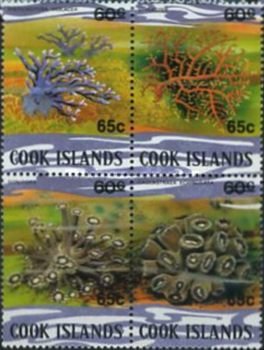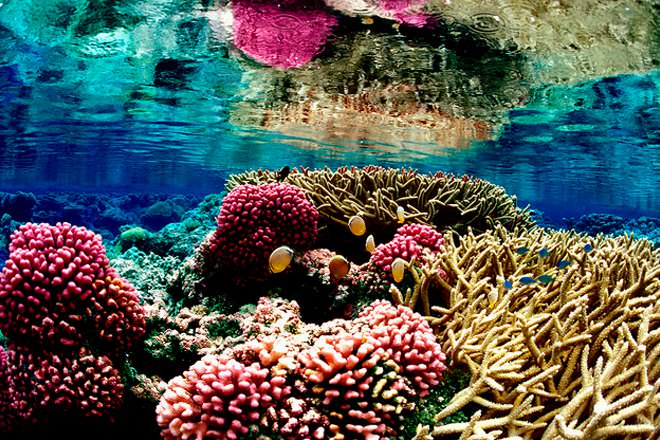Se-tenant: Corals (Cook Islands 1987)
Corals (Cook Islands 1987)
11 February (Cook Islands ) within release Corals goes into circulation Se-tenant Corals face value 4*65 Cook Islands cent
| Se-tenant Corals in catalogues | |
|---|---|
| Michel: | Mi: CK 1177-1180 |
| Stamp Number: | Sn: CK 962 |
Se-tenant is square format.
Overprint Mi 747-750Also in the issue Corals:
- Se-tenant - Corals face value 4*65;
- Se-tenant - Coral face value 4*75;
- Se-tenant - Corals face value 4*18;
- Se-tenant - Corals face value 4*65;
- Se-tenant - Corals face value 4*18;
- Se-tenant - Corals face value 4*10;
Se-tenant Corals it reflects the thematic directions:
Animals are multicellular, eukaryotic organisms of the kingdom Animalia (also called Metazoa). All animals are motile, meaning they can move spontaneously and independently, at some point in their lives. Their body plan eventually becomes fixed as they develop, although some undergo a process of metamorphosis later on in their lives. All animals are heterotrophs: they must ingest other organisms or their products for sustenance.
A coral reef is an underwater ecosystem characterized by reef-building corals. Reefs are formed of colonies of coral polyps held together by calcium carbonate. Most coral reefs are built from stony corals, whose polyps cluster in groups.
Marine life, or sea life or ocean life, refers to the plants, animals and other organisms that live in the salt water of the sea or ocean, or the brackish water of coastal estuaries. At a fundamental level, marine life helps determine the very nature of our planet. Marine organisms produce much of the oxygen we breathe. Shorelines are in part shaped and protected by marine life, and some marine organisms even help create new land. Altogether there are 230,000 documented marine species, including over 16,000 species of fish, and it has been estimated that nearly two million marine species are yet to be documented. Marine species range in size from the microscopic, including plankton and phytoplankton which can be as small as 0.02 micrometres, to huge cetaceans (whales, dolphins and porpoises) which in the case of the blue whale reach up to 33 metres (109 feet) in length, being the largest known animal.



